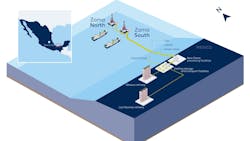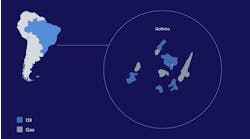Report: Mexico’s Zama oil project undergoing changes in engineering design
Offshore staff
HOUSTON – The Zama offshore oilfield development project operated by state company Pemex has been “delayed for the right reasons,” according to Talos Energy Chief Executive Tim Duncan.
Duncan said that the delay will allow needed changes to the engineering design that will enable the project to move forward.
Duncan was quoted by Reuters in a conference call that took place in late February. Talos Energy is partnered with Pemex to advance the Zama project.
According to Reuters, Mexico’s oil regulator approved a Pemex request to modify the Zama project’s development plan and cut its budget to under $70 million this year, from more than $1.24 billion, and delay related infrastructure projects.
Pemex and the regulator agreed to maintain the total investment for the project at around $9.1 billion through 2045.
The delay “has to do with really getting the right plan in place,” said Duncan, as quoted by Reuters. “Some of the engineering design work is taking a little longer, but it’s at a place of effort to get it right, and I’m okay with that.”
According to the report, Talos has “other options” for Zama that are being examined – apparently a reference to different field development options. These options are being examined by Talos along with partners Pemex, Wintershall Dea and Harbour Energy before a final investment decision will be made, Duncan said.
Talos Energy discovered the Zama field in 2017 and estimated its oil deposits to hold 735 million barrels, and wanted to operate the deepwater Gulf of Mexico project. But Mexico’s authorities gave Pemex the right to be the operator.
Last September, Talos completed a $125-million transaction with a unit of Grupo Carso, owned by Mexican tycoon Carlos Slim, which involved the sale of 49.9% of its subsidiary Talos Mexico.
Final investment decision for the field development is still expected in 2024, followed by the start of production in December 2025. Peak production capacity of up to 180,000 barrels of oil and 70.35 million cubic feet of gas per day is expected to be achieved by 2029.
03.12.2024



